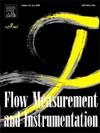Leak detection in pipelines based on acoustic emission and growing neural gas network utilizing unlabeled healthy condition data
IF 2.3
3区 工程技术
Q2 ENGINEERING, MECHANICAL
引用次数: 0
Abstract
Leak detection in pipelines is crucial to prevent economic losses, guarantee safety and reduce undesirable environmental impacts. Hence, it becomes necessary to detect leaks as early as possible. Recent studies reported several leak detection techniques that primarily analyze Acoustic emission. (AE) data through artificial intelligence (AI) algorithms for investigating pipeline leaks. As prior labeled leakage data is typically required for training these AI models, their usage in industrial settings is impracticable. Moreover, existing works suggest various AE-based features that respond differently to premature leaks, which calls for development of comprehensive leak indicators to arrive at clear-cut decisions. This paper proposes a novel approach based on AE data and growing neural gas (GNG) network to build health indicators for real-time tracking of pipeline condition and sensing incipient leaks. GNG models the data topology in an unsupervised manner without making any prior assumptions about their structure and distribution. First, the AE signals are acquired from the test pipeline and the time- and frequency-domain features are extracted from AE signals. Then, the GNG is trained with feature data belonging to pipeline healthy condition only. In the end, the desired health indicator is obtained by supplying incoming feature samples to the already trained GNG model. The proposed approach is validated on the pipeline data collected from both laboratory experimental setup and actual field. The results indicate that the developed pipeline health indicator is capable of recognizing very small-size leaks and predicting their severity as leak-size cultivates. Moreover, higher average leak detection accuracy and leak sensitivity for different pressure conditions, i.e. 100 % and 96.5 %, are obtained. The proposed GNG-based-leak diagnosis framework outperforms the existing techniques such as Gaussian mixture models (GMM) and Support vector data description (SVDD) by improving the leak detection accuracy and leak sensitivity via 24.1 % and 5.4 %, respectively.
求助全文
约1分钟内获得全文
求助全文
来源期刊

Flow Measurement and Instrumentation
工程技术-工程:机械
CiteScore
4.30
自引率
13.60%
发文量
123
审稿时长
6 months
期刊介绍:
Flow Measurement and Instrumentation is dedicated to disseminating the latest research results on all aspects of flow measurement, in both closed conduits and open channels. The design of flow measurement systems involves a wide variety of multidisciplinary activities including modelling the flow sensor, the fluid flow and the sensor/fluid interactions through the use of computation techniques; the development of advanced transducer systems and their associated signal processing and the laboratory and field assessment of the overall system under ideal and disturbed conditions.
FMI is the essential forum for critical information exchange, and contributions are particularly encouraged in the following areas of interest:
Modelling: the application of mathematical and computational modelling to the interaction of fluid dynamics with flowmeters, including flowmeter behaviour, improved flowmeter design and installation problems. Application of CAD/CAE techniques to flowmeter modelling are eligible.
Design and development: the detailed design of the flowmeter head and/or signal processing aspects of novel flowmeters. Emphasis is given to papers identifying new sensor configurations, multisensor flow measurement systems, non-intrusive flow metering techniques and the application of microelectronic techniques in smart or intelligent systems.
Calibration techniques: including descriptions of new or existing calibration facilities and techniques, calibration data from different flowmeter types, and calibration intercomparison data from different laboratories.
Installation effect data: dealing with the effects of non-ideal flow conditions on flowmeters. Papers combining a theoretical understanding of flowmeter behaviour with experimental work are particularly welcome.
 求助内容:
求助内容: 应助结果提醒方式:
应助结果提醒方式:


